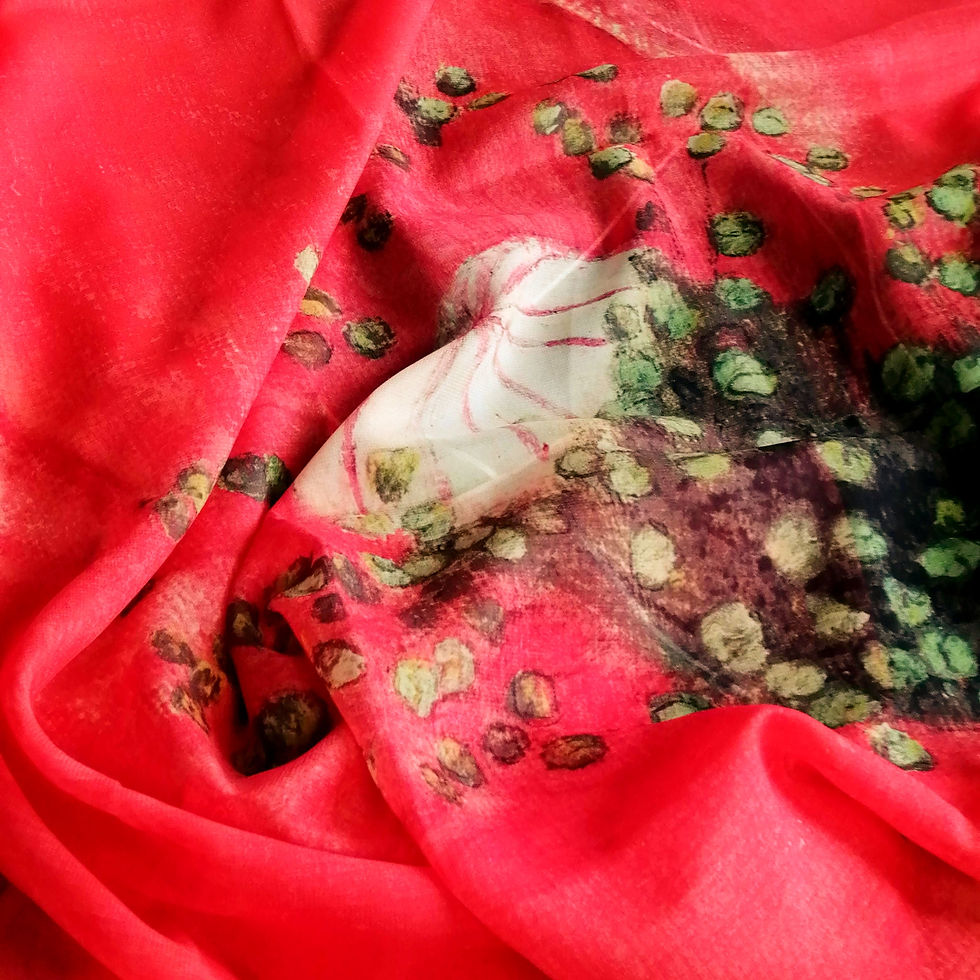
Have you ever looked at the ‘blurb” alongside a painting and read something along the lines of, “this colour means...” as if it’s a universally acknowledged truth? For example, I recently came across this on Shutterstock, “Red is a universal color of life. Beyond blood, it represents physical energy and humans’ will to exist. It’s evident in all facets of what makes life . . . life.”
I’m never entirely comfortable with this because the meaning depends upon your culture and will also have varied throughout history.
The symbolism of colours has been influenced by events, literature, chemistry and even basic economics throughout history and no doubt this will continue. For example, if I’d asked you in 2021 what blue and yellow signified, I’m fairly certain your answer would have been different from the answer you’d give today.
So, here are a few things that might make you look at reds differently.
Toxic
Many red pigments are toxic! Both mercury and cadmium have been used to produce some of the brightest reds. Making vermilion using mercury in the 13th century was at one point so complex and the method was so closely guarded, that it was as expensive gold and produced such poisonous gases that it was banned in places such as Venice. Concerns about cadmium in pigments led to discussions about a ban around 2014 which many artists were very concerned about.

Insects
Some of the most expensive and sought after reds come from tiny insects. In the 15th century, kermes dye was obtained from crushed beetles imported from southern Europe and cloth made from it was only available to the very wealthy.
Cochineal, another dye produced by crushing insects was used in South America for centuries before Europeans even reached the continent. It, too, was extremely expensive.

Royal Robes
Crushing thousands of tiny insects that had to be shipped halfway around the world to be used in complicated recipes to get the most sumptuous reds meant it was so expensive to produce that inevitably red cloth became associated with wealth and power.
This association wasn’t just economic. From medieval times on, there were laws defining what different classes could wear! Henry VIII passed sumptuary-laws which meant only higher ranking people could wear red. Those below the rank of knight of the garter who wore red faced a fine of 40 shillings (an eye-watering sum at that time).
As recently as the 1980s, an unholy row arose over red choir robes which led to the Queen providing an entire set of replacement robes to a cathedral choir apparently wearing a particular shade that was limited to choirs with royal patronage!
Scarlet Women
Although, linked with wealth and royalty, both Elizabeth I and II chose robes of other colours for their coronations. I’m not sure why that was the case with Elizabeth II, but with Elizabeth I, it is thought that as red was at that time also seen as symbolic of Catholicism and linked to the ‘Whore of Babylon’ mentioned in the book of Revelations, it wasn’t going to be a good look for England’s protestant, virgin Queen.

Warnings and Weddings
The symbolism of red varies across the world, and too often this is ignored. Weddings are a great example of this. When did you last see a bridal wear ad for a red wedding dress? The answer might depend on where you live. Most UK brides wouldn’t even consider a red dress, but in India, China and Russia red would be worn at weddings.
In many Western countries, red symbolises danger. It is used for stop signs, warnings and danger signals, but in places like China, red symbolises happiness and is apparently never worn at funerals, unlike South Africa where it has become symbolic of mourning.

Painting Red
I paint using Sennelier oil pastels and there is a good range of reds available which makes painting in red quite a pleasure.
I have also noticed that Instagram posts about red paintings such as Poppy and my Poinsettia Collection tend to stir more interest than posts that are predominantly other colours. Possibly, because scrollers find red eye catching rather than because of any symbolic associations.

I hope this rummage through the symbolism and history of reds has had you seeing red differently rather than just seeing red!
What does red mean to you?






Comments